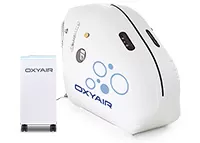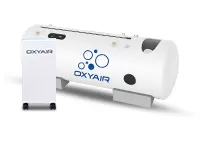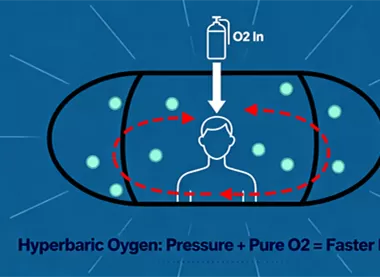How to Choose the Right Hyperbaric Chamber for Personal Therapy
Summary: Choosing a hyperbaric chamber for personal therapy can feel overwhelming, especially with different pressure levels, designs, and safety systems on the market. This guide explains how home hyperbaric chambers work, what features matter most, and how to select the right model for your health goals—all in simple, clear language.
Why More People Are Choosing Personal Hyperbaric Chambers
Personal hyperbaric chambers are becoming increasingly popular as more people look for convenient ways to support recovery, boost energy, and manage long-term wellness at home. With advancements in safety systems and user-friendly controls, owning a hyperbaric chamber is no longer something limited to medical centers.
Whether you're an athlete recovering between training cycles, someone managing chronic inflammation, or simply looking to improve overall wellness, choosing the right chamber matters. Your experience and your results depend on selecting a chamber that fits your goals, lifestyle, and safety needs.
How Hyperbaric Oxygen Therapy Works
Before choosing a chamber, it helps to understand how HBOT works at home. A personal hyperbaric chamber increases the surrounding air pressure while providing high-purity oxygen through a mask or oxygen delivery system. The higher pressure allows more oxygen to dissolve into your bloodstream, reaching areas with poor circulation and supporting natural healing processes.
Personal hyperbaric chambers typically operate between 1.3 ATA and 2.0 ATA, which is safe and effective for home use. The experience is simple: enter the chamber, allow it to pressurize, breathe oxygen during the session, and let the chamber depressurize afterward.
Key Factors When Choosing a Hyperbaric Chamber for Personal Therapy
1. Understand Your Health and Wellness Goals
Your goals determine the type of chamber you should choose. Ask yourself:
Are you recovering from intense workouts or sports injuries?
Do you need support for long-term conditions like inflammation, nerve pain, or chronic fatigue?
Are you looking for general wellness, anti-aging, or cognitive support?
For everyday wellness and recovery, a soft-shell chamber (1.3–1.5 ATA) is often enough. For deeper therapeutic needs, a hard-shell chamber that reaches up to 2.0 ATA may provide additional benefits.
2. Choose the Right Pressure Range
Pressure is one of the most important factors. Here's a simple breakdown:
1.3 ATA: Ideal for general wellness, relaxation, sleep support, mild inflammation.
1.5 ATA: Good for recovery, chronic fatigue, mild injuries, light therapy needs.
2.0 ATA: Stronger therapeutic effect; useful for deeper tissue recovery, neurological support, and more complex wellness goals.
For most personal users, 1.3–1.5 ATA soft chambers offer excellent balance between safety, comfort, and results. If you need clinical-level support, consider a 2.0 ATA hard-shell chamber.
3. Soft-Shell vs. Hard-Shell: Which Should You Choose?
Soft-Shell Hyperbaric Chambers (1.3–1.5 ATA)
Lightweight and portable
Easier to install and move at home
Best for wellness, relaxation, and light recovery
Lower cost and low maintenance
Best for: personal wellness, families, athletes needing daily recovery, beginners.
Hard-Shell Hyperbaric Chambers (1.5–2.0 ATA)
Stronger therapeutic effect
More durable and stable
Better for long-term chronic conditions or stronger recovery needs
Higher safety ratings and advanced controls
Best for: users wanting maximum therapeutic output, wellness centers, individuals with long-term recovery needs.
4. Check the Safety Systems
A good personal hyperbaric chamber must include reliable safety features. The most important are:
Multiple pressure relief valves (automatic + manual)
Emergency depressurization system
Oxygen purity monitoring
Stable structural design tested for uniform pressure
Never purchase a chamber without documented safety testing or certifications.
5. Consider Size, Space, and Comfort
Think about where the chamber will be placed and how often it will be used. Key questions include:
Do you prefer lying down or sitting upright?
Is the chamber big enough for you to move comfortably?
Do you want a single-user or two-user model?
Does it include features like air conditioning or view windows?
Comfort plays a major role in long-term use. A chamber that feels too small or warm can discourage regular sessions.
6. Look for Smart Control and Ease of Use
Modern personal hyperbaric chambers often come with advanced user-friendly features, such as:
Touch-screen controls
Real-time pressure monitoring
Preset programs for beginners
Remote control operation
Quiet air compressors
If you’re new to HBOT, easy operation makes a huge difference.
7. Compare Warranty and After-Sales Support
A hyperbaric chamber is a long-term investment. Choose a manufacturer that offers:
Clear warranty terms
Responsive technical support
Parts replacement availability
Professional installation guidance
A reliable brand should provide transparent certificates, safety documents, and customer service.
Which Hyperbaric Chamber Is Right for You?
Here are quick recommendations based on user profiles:
For general wellness and stress relief: 1.3 ATA soft-shell chamber
For injuries and frequent physical recovery: 1.5 ATA soft-shell or portable chamber
For neurological support or deeper therapy: 2.0 ATA hard-shell chamber
For home clinics or families with multiple users: Large sit-in or dual-user models
Choosing the right chamber ensures better results, higher comfort, and long-term safety.

Frequently Asked Questions
1. Is a personal hyperbaric chamber safe for home use?
Yes, as long as you choose a certified chamber with proper safety systems. Home-use chambers operate within safe pressure ranges and are designed for non-clinical environments.
2. How often should I use a personal hyperbaric chamber?
Most users begin with 3–5 sessions per week. Some use it daily depending on their goals. Regular use gives the best results.
3. Do soft-shell chambers work as well as hard-shell chambers?
Soft-shell chambers are excellent for wellness and mild therapy. Hard-shell chambers offer deeper therapeutic effects due to higher pressure.
4. What should I look for in a high-quality hyperbaric chamber?
Focus on pressure rating, safety systems, certifications, structural integrity, comfort, and manufacturer support.
5. Can I use a hyperbaric chamber if I live alone?
Yes. Many chambers come with remote controls and simple operating systems. Just follow the installation and safety instructions.
6. How long does one session usually last?
Most personal therapy sessions last 60–90 minutes, depending on pressure level and personal goals.
Previous:
None















